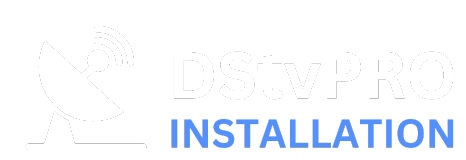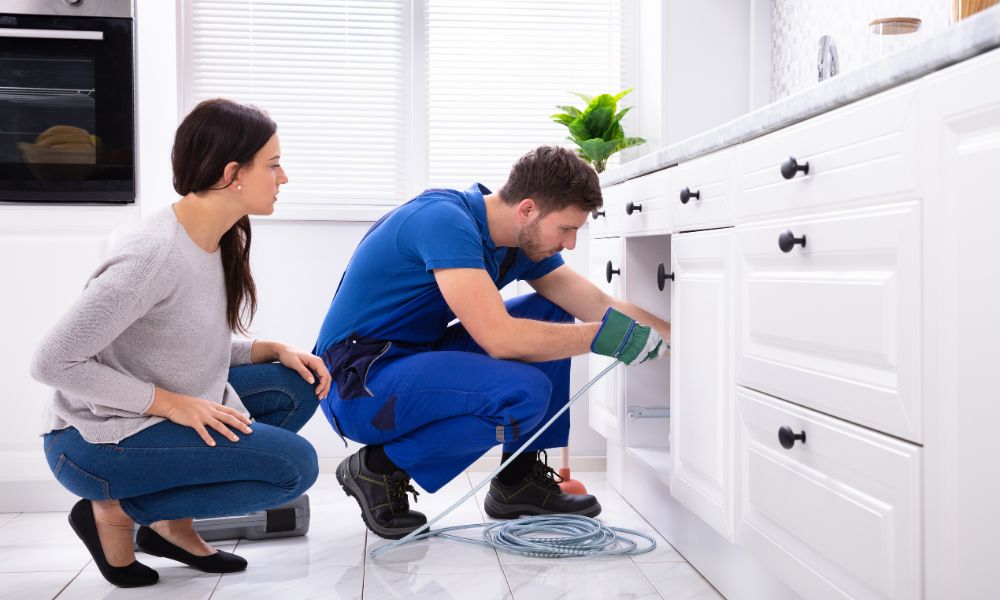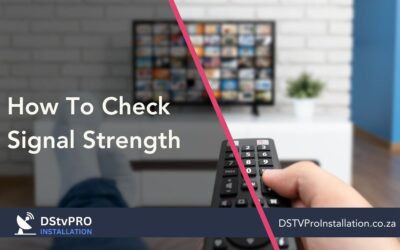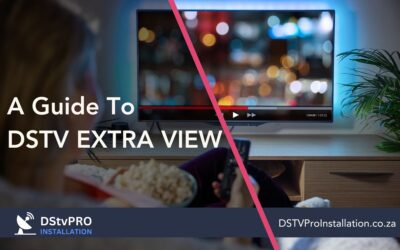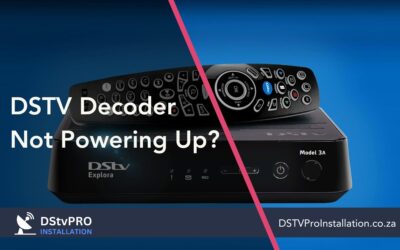The Importance of Proper Connection for Optimal Viewing Experience
Satellite TV is a popular way to access a wide variety of programming, and Digital Satellite Television (DStv) is a popular provider in many countries. The DStv Explora decoder is a powerful device that allows you to access a wealth of content, including live TV, on-demand movies, and more. However, to enjoy these features fully, it’s important to make sure that the decoder is correctly connected to the satellite dish using LNB cables.
The LNB (Low Noise Block) cable plays an essential role in the satellite dish setup. It connects the dish to the decoder and enables signals from the satellite to be received and decoded.
Without proper connection of the LNB cable(s), your viewing experience will be less than optimal as you may experience poor signal quality or no signal at all. In this article, we will walk you through everything you need to know about connecting DStv Explora LNB cables so that you can enjoy uninterrupted access to all your favorite shows and movies.
We’ll cover everything from understanding what an LNB cable is and its function in a satellite dish setup, what tools are needed for proper connection, step-by-step guide on how to connect DStv Explora LNB cables, testing your connection after installation, and troubleshooting tips if there are any issues with your connection. So let’s get started!
Understanding LNB Cables
LNB stands for Low-Noise Block Downconverter. An LNB cable is a coaxial cable used to transmit and receive satellite signals from the dish to the decoder. It is a vital component in any satellite TV setup, as it converts the high-frequency signals the satellite dish receives into lower frequencies that can be transmitted through a coaxial cable.
There are two main types of LNB cables: single LNB and twin LNB. A single LNB cable has one output, which means that it can only support one decoder at a time.
A twin LNB cable, on the other hand, has two outputs, which means that it can support two decoders at once. Aside from these two main types of LNB cables, there are also quad and octo LNB cables.
Quad LNB cables have four outputs, while octo LNB cables have eight outputs. These types of cables are ideal for setups with multiple decoders or if you want to distribute your signal to different rooms in your house.
LNB cables come in different sizes and lengths, but generally range from 50 feet to 100 feet long. It’s important to choose an appropriate length of cable depending on how far away your dish is from your decoder and the number of decoders you plan to use.
In choosing an appropriate type of LBN cable for your setup, you should consider how many televisions or decoders you plan on using and whether you need access from more than one room. The strength of your satellite signal will also depend on where you live geographically so make sure any suggestions offered by friends or family living elsewhere don’t necessarily apply to your location.
Tools Needed for Connecting DStv Explora LNB Cables
Before we dive into the step-by-step guide on how to connect DStv Explora LNB cables, it is important to have the necessary tools on hand. Here are the essential tools you will need:
Screwdriver
You will need a screwdriver to attach the F-connectors to the LNB cables and tighten them securely. A small Phillips head screwdriver should work well.
Cable cutter
A cable cutter is important for cutting the LNB cables to the appropriate length and stripping off any excess insulation. Make sure your cable cutter is sharp and can cut through both copper and aluminum cables with ease.
F-connectors
You will also need F-connectors, which are small metal connectors that attach to both ends of your LNB cables. These connectors ensure a secure connection between your satellite dish and decoder, so make sure they fit properly with your cables.
Cable ties or clips
Cable ties or clips can be useful for securing your LNB cables in place after installation. These help prevent any damage caused by weather or other external factors, ensuring long-lasting viewing enjoyment.
Make sure you have all the necessary tools before starting installation of DStv Explora LNB cables. Having these tools handy will make everything go smoothly as you connect your satellite dish and decoder.
Steps to Connect DStv Explora LNB Cables
Identifying the Correct Ports on the Decoder and Satellite Dish
Before starting the connection process, it’s essential to identify the correct ports on both your decoder and satellite dish. The decoder typically has two LNB input ports labeled “LNB In” and “LNB Out.” The “LNB In” port is where you’ll connect your primary LNB cable, while the “LNB Out” port is for a secondary LNB cable if you’re using a twin LNB.
On some models of DStv Explora decoders, there may be only one LNB input port. On the other hand, identifying the correct ports on your satellite dish is more straightforward.
The dish usually has an LNB arm with an LNB connector at the end. It would help if you connected your primary cable to this connector.
Properly Stripping and Connecting Cables using F-connectors
After identifying the correct ports, it’s time to connect your cables properly. Start by stripping off about 1cm of the outer insulation of each cable using a stripper tool or sharp knife.
Next, twist together any exposed braids as tightly as possible. Next, slide an F-connector onto each stripped cable until it’s about 1 cm from its end.
Ensure that each connector’s threaded part faces outward towards you when holding it vertically in front of you. Screw each F-connector onto its designated port tightly but avoid over-tightening this could damage either or both cables or make removing them difficult if needed later on.
Tips for Avoiding Common Mistakes During Installation
While connecting DStv Explora LNB cables might seem simple enough at first glance, there are several common mistakes people make during installation that can lead to problems with signal quality. Here are some tips to help you avoid these common mistakes:
– Avoid bending or twisting your cables too tightly, as this can cause signal loss and disrupt your viewing experience. – Ensure that you connect the primary LNB cable to the correct port on your decoder.
– Make sure that all F-connectors are screwed on tightly to avoid any loose connections. – Test your connection after installation to ensure optimal signal strength and quality.
By following these steps and tips, you should be able to connect DStv Explora LNB cables without any problems. Remember, a proper connection is crucial for optimal viewing experience.
Testing Your Connection
Once you have successfully connected the DStv Explora LNB cables, it is time to test your connection. Testing your connection will ensure that everything is working properly and you are receiving a signal from the satellite. Here are some steps to follow when testing your connection:
Checking Signal Strength
The first step in testing your connection is to check the signal strength. You can do this by going to the “Settings” menu on your decoder and selecting “Satellite Settings”.
From here, you can see the signal strength and quality. If there is no signal or if the signal strength is weak, you may need to adjust your satellite dish.
Run a Scan
In order to receive all available channels, you need to run a scan after connecting your DStv Explora LNB cables. To do this, go to the “Settings” menu and select “Satellite Settings”.
From here, select “Scan All Networks” and wait for the scan to complete. This may take a few minutes depending on how many channels are available in your area.
Troubleshooting Tips
If there are any issues with your DStv Explora LNB cable connection, here are some troubleshooting tips that might help:
Check Your Connections
If you notice that there is no signal or poor quality picture on some of your channels, check all connections between decoder and satellite dish. Ensure that they are tight enough as loose connections could result in poor signals.
Reposition Your Satellite Dish
If adjusting connections doesn’t work then consider repositioning of satellite dish where it has a line of sight with no obstruction from any object such as trees or buildings which might limit signal strength.
Consult a Technician
If all else fails, it is recommended to seek the assistance of a professional technician who can help you troubleshoot the problem and give an effective solution.
Conclusion
Connecting DStv Explora LNB cables can be daunting, but with the right tools and steps, it can be a quick and easy process. In this article, we have discussed the importance of proper connection for optimal viewing experience, defined what an LNB cable is and its function in a satellite dish setup, listed the necessary tools needed for connecting DStv Explora LNB cables, provided a step-by-step guide on how to connect DStv Explora LNB cables, offered tips to avoid common mistakes during installation and discussed how to test your connection after installation. It is crucial that you follow these steps carefully to ensure that your DStv Explora decoder functions effectively.
A poor connection can lead to poor signal quality or no signal at all. If you encounter any problems during the installation process or while testing your connection, seek professional assistance from an accredited installer.
We hope that this article has helped you in understanding how to connect your DStv Explora LNB cables. By following these guidelines carefully, you can enjoy uninterrupted and high-quality viewing experience on your decoder.
Remember that proper maintenance of your satellite dish setup will ensure longevity and optimal functioning of the equipment. Happy viewing!

With over a decade of experience in satellite installation, Mthunzi is a seasoned Satellite Installation Technician at DStv Pro Installation. Recognized for his meticulous attention to detail and expert knowledge in signal troubleshooting, Mthunzi has successfully completed over 1,000 installations, earning a reputation for reliability and excellence. Certified and constantly updated on the latest technology, he’s the go-to professional you can trust for a seamless DStv experience.
